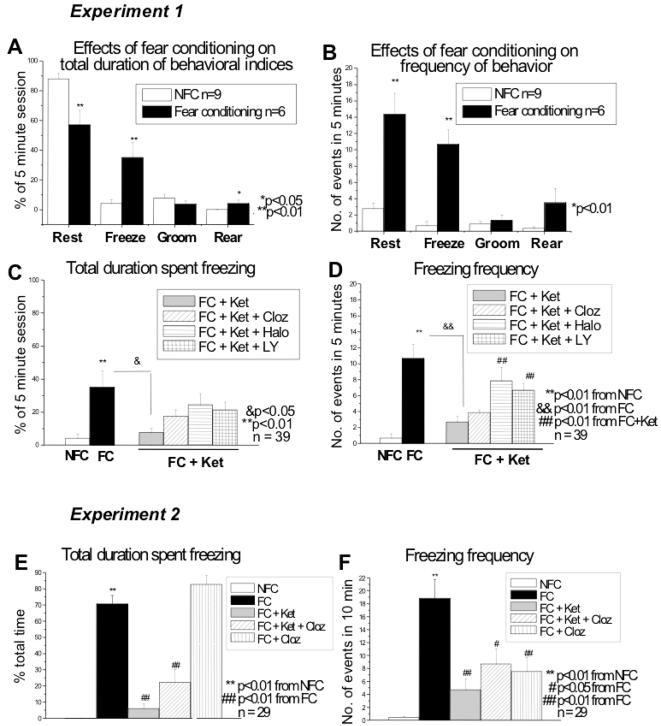Figure 3. Behavioral data.
Experiment 1 (behavior measured after test session): Bars represent means±SEM. Fear conditioning affects almost all of the behaviors including a decrease in resting duration (p = 0.0064; A), and increases in rearing duration (p = 0.0262; A), resting frequency (p<0.0001; B), and freezing duration (p = 0.0001; A) and frequency (p<0.0001; B). As hypothesized, ketamine blocked the effect of fear conditioning (FC vs. FC+Ket), reducing freezing duration (p = 0.0213; C) and frequency (p = 0.0002; d). Haloperidol (p = 0.0040) and LY 379268 (p = 0.0026) were able to partially inhibit this blockade (FC+Ket+Halo/LY vs. FC+Ket), but only in terms of freezing frequency (D). Experiment 2 (behavior measured during test trial): Fear conditioning increased (E) total freezing duration and (f) freezing frequency as compared to the NFC group. Ketamine blocked this effect (FC vs. FC+Ket) in terms of the total duration and freezing frequency. Clozapine alone (FC vs. FC+Cloz) reduced (F) freezing frequency. The FC+Ket+Cloz group was also not statistically different from the FC+Ket group in terms of freezing behavior. Cloz, clozapine; FC, Fear conditioning; Halo, Haloperidol; Ket, Ketamine; LY, LY 379268; NFC, no fear conditioning.

